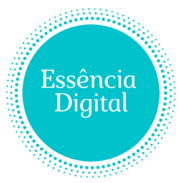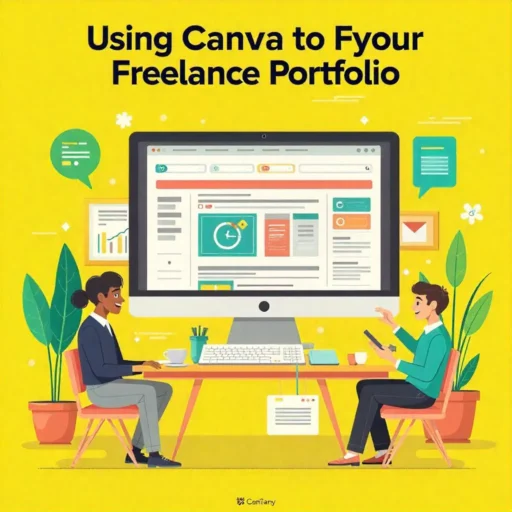Why a Portfolio Matters—And Why Canva Is a Game Changer
A standout portfolio is a freelancer’s most essential marketing tool—it’s your virtual handshake, first impression, and proof of expertise all at once. For many freelancers, however, the prospect of building a beautiful, professional portfolio is daunting, especially without advanced design skills or a big budget. Enter Canva: an intuitive, versatile design platform that empowers everyone to build eye-catching, tailored portfolios—no graphic design background required. This guide will walk you step by step through creating a compelling freelance portfolio with Canva, offering best practices and creative ways to attract your dream clients.
Step 1: Define Your Portfolio’s Purpose and Audience
Before you open Canva, clarify:
- What work do you want to showcase? (Writing, design, photography, consulting, translation, etc.)
- Who is your ideal client? (Businesses, agencies, individuals, certain industries)
- What do you want visitors to do? (Contact you, download your CV, follow your work, hire you for a specific service)
Tailor your portfolio’s style and content to match the type of client and project you want more of.
Step 2: Gather and Organize Your Content
Collect your best:
- Project samples (screenshots, PDFs, links)
- Case studies or before-and-after visuals
- Testimonials and client reviews
- Brief descriptions of services
- Professional photo and “About Me” section
- Contact information and links (email, website, LinkedIn, social profiles)
Organize your assets into folders for easy upload into Canva.
Step 3: Choose the Right Format
Canva allows you to create:
- Multi-page PDF portfolios (excellent for emailing or downloadable links)
- Single-page “sales sheets” or visual CVs (good for single-service freelancers)
- Dynamic website-style portfolios hosted on Canva (great for instant sharing)
- Social media portfolio carousels or stories (for Instagram, LinkedIn, etc.)
Pick the format that suits your goals—and remember, you can create multiple versions for different purposes.
Step 4: Select or Create a Canva Template
Canva’s library is packed with portfolio templates for many fields—writing, design, photography, consulting, and more. To select a template:
- Log into Canva and search “portfolio,” “presentation,” or “[your niche] portfolio.”
- Preview templates for structure, not just color; you can customize virtually every element.
- Choose a template that feels modern, clean, and aligned with your personal brand.
Don’t be afraid to remix elements from several templates. Simplicity and clarity often trump flashy design.
Step 5: Customize Your Layout and Style
- Branding: Apply your colors, fonts, and logo for a polished, consistent look.
- Headlines: Use clear section headers: “About Me,” “Featured Work,” “Services,” “Client Testimonials,” “Contact.”
- Navigation: For multi-page portfolios, add clickable page links or a simple contents page.
- Whitespace: Leave room around elements; cluttered portfolios are hard to read.
Canva’s drag-and-drop interface makes it easy to move, duplicate, and scale elements until everything feels balanced and professional.
Step 6: Showcase Your Work Strategically
- Lead with your best work: Place your strongest projects or most relevant samples at the beginning.
- Include 4–6 case studies or featured pieces: For each, briefly describe the project goal, your approach, and the results (with visuals or data if possible).
- Use real client testimonials: Even a short quote adds social proof and trust.
- Mix project types if you’re multi-skilled, but avoid overwhelming with too many samples. Quality always beats quantity.
Step 7: Write Compelling Copy
- About Section: Tell your story—what you do, what you love, who you help, and why you’re different.
- Project Descriptions: Use bullet points, highlight challenges solved, and state measurable outcomes if possible (“Boosted engagement by 20%”).
- Call-to-Action: Always end with a next step (“Contact me to discuss your project!”), making it easy for clients to reach out.
Step 8: Optimize for Viewing and Sharing
- Proofread thoroughly—typos undermine your professionalism.
- Use high-resolution images for clarity on any device.
- Test download and sharing features: Canva lets you export portfolios as PDFs, share links for viewing online, or even publish as a live web page.
- Mobile-friendliness: Preview on mobile devices; many clients first open portfolios from their phones.
Step 9: Update Regularly
- Refresh work samples as you complete new, stronger projects.
- Swap out old testimonials for new rave reviews.
- Keep your contact details current and update your service offerings as your business grows.
Professional portfolios are living documents—a minor update every few months keeps you competitive.
Creative Ideas to Stand Out on Canva
- Add video introductions or project walkthroughs (with Canva’s video embed features or links to YouTube/Vimeo).
- Embed interactive or animated graphics for digital presentations.
- Include infographics or process diagrams that demonstrate your workflow and expertise.
- Show “project journeys”—before-and-after screenshots, storyboards, or client feedback at different stages.
Sending and Presenting Your Canva Portfolio
- Email as an attached PDF (ideal for job applications or proposals).
- Send a direct Canva link with view/edit permissions.
- Use as a visual aid on video calls or screen shares with prospective clients.
- Share a teaser “carousel” on LinkedIn or Instagram to drive traffic to the full portfolio.
Common Mistakes to Avoid
- Overloading with too many samples or dense text.
- Neglecting mobile optimization.
- Using inconsistent branding (colors, fonts, styling).
- Not including a clear next step (missing contact info or call-to-action).
Conclusion: Your Portfolio, Your Story
A stunning portfolio made in Canva helps you tell your story, display your abilities, and create meaningful connections with your dream clients. The platform’s accessibility means you can refine, update, and personalize your presentation as you grow—without waiting for a designer or investing in expensive software.
Remember, your portfolio is more than a gallery—it’s a career accelerator. Keep it polished, focused, and truly your own, and watch your freelance business thrive.

